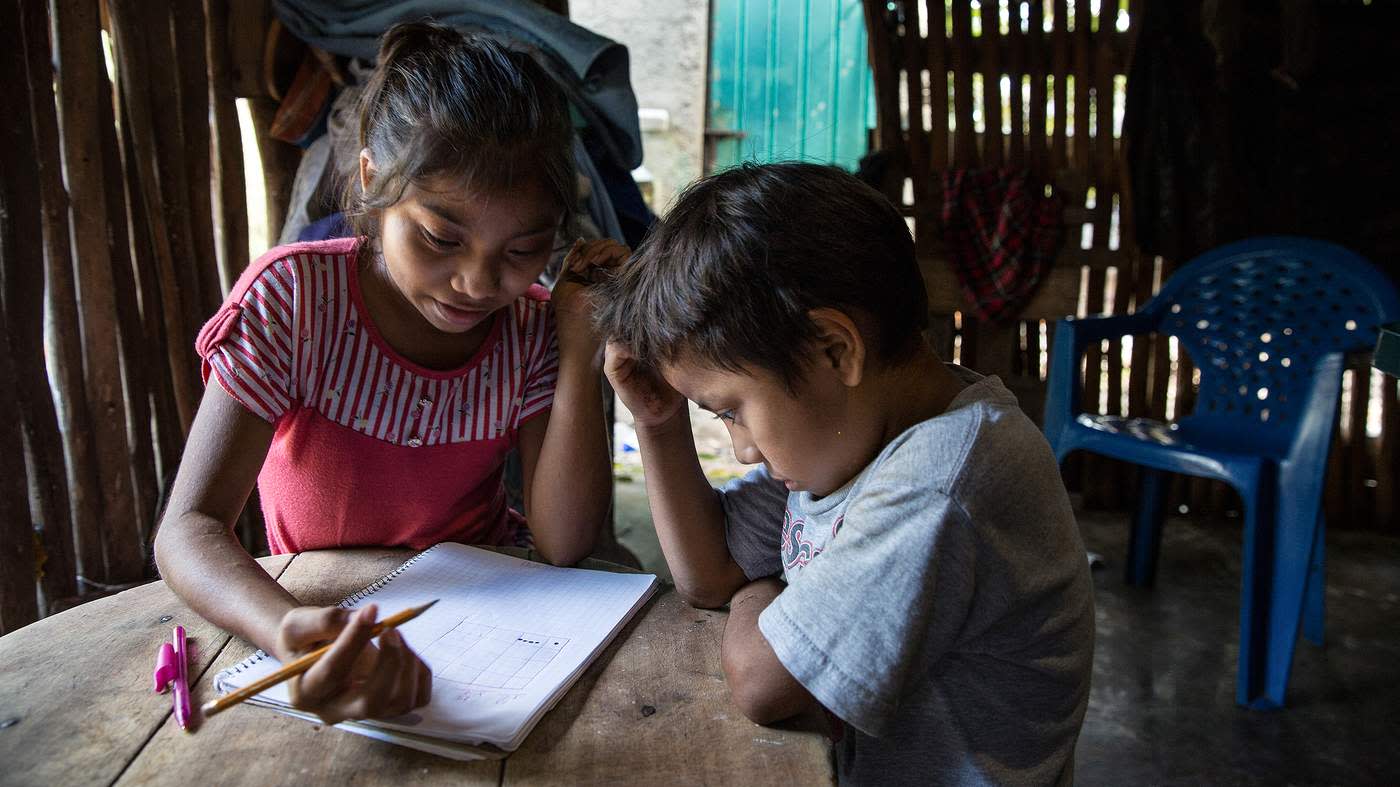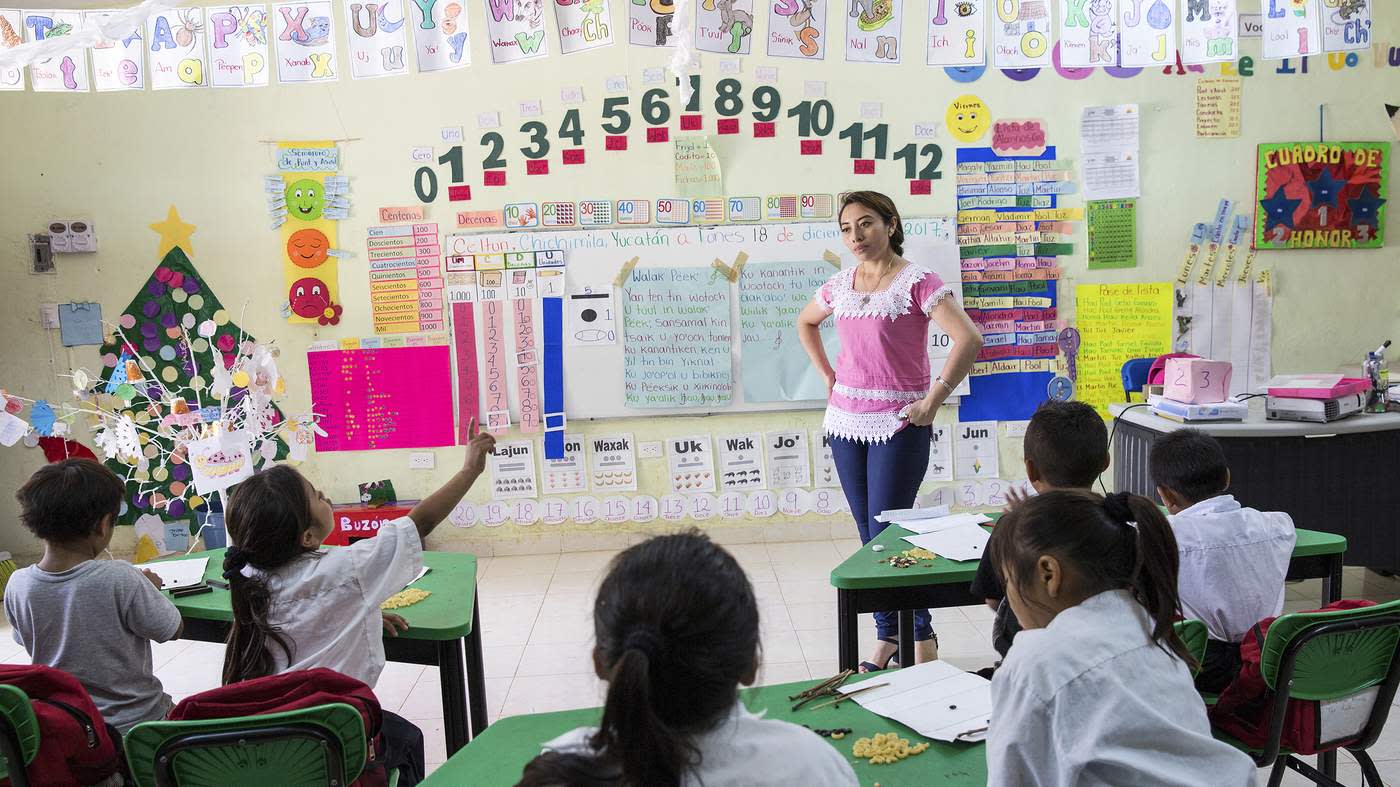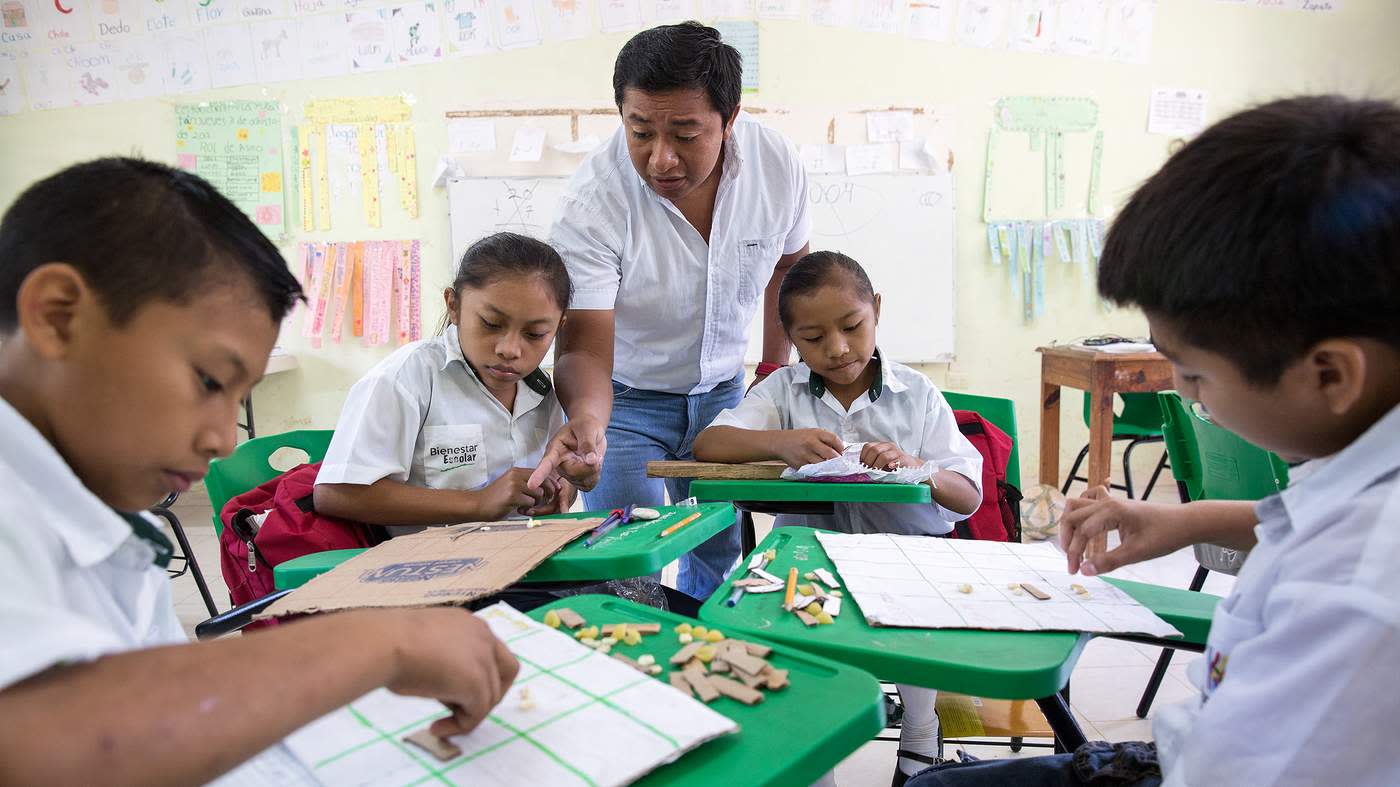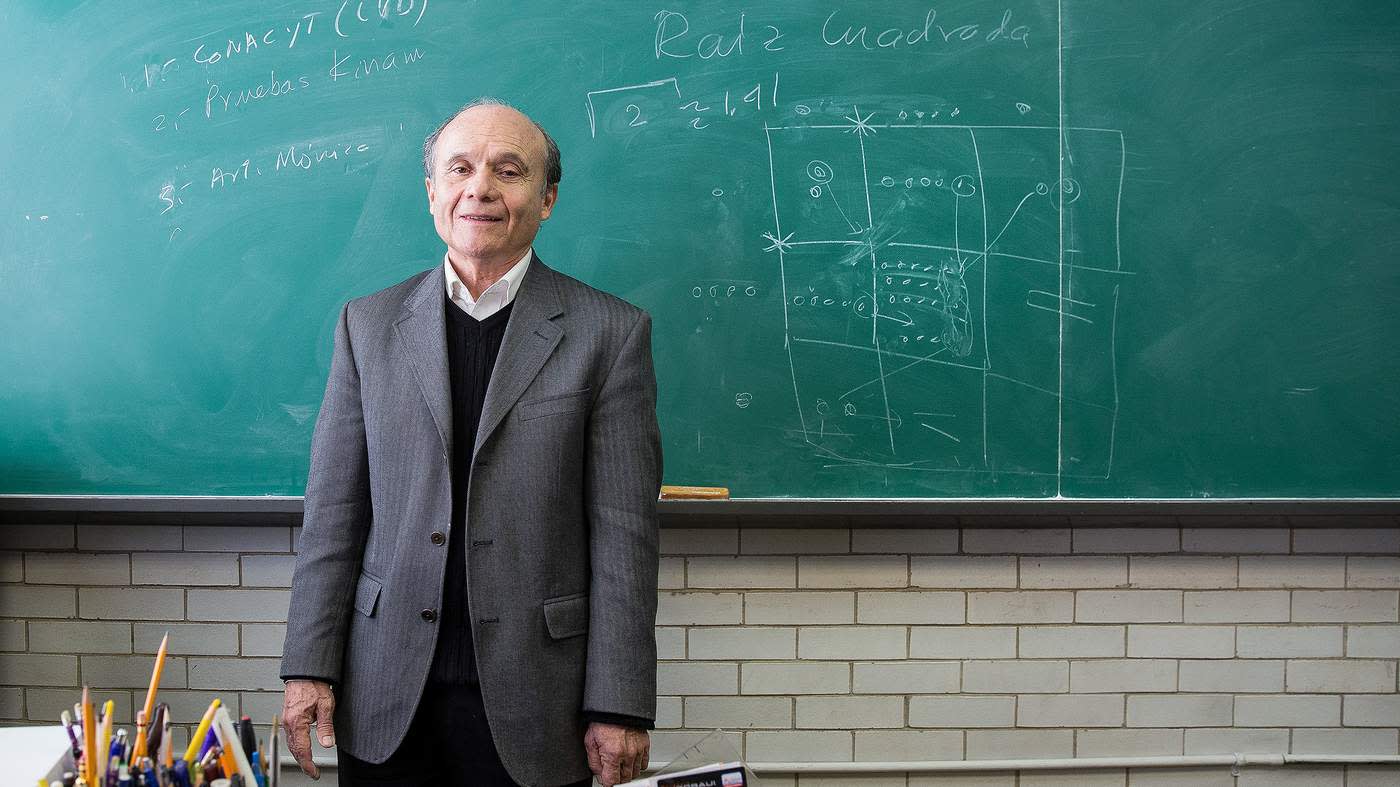In a classroom in south-east Mexico, eight-year-old Verónica Yuritzi Martín Puc’s hand shoots up with the answer. On her desk is a sheet of paper with a simple grid drawn on it. She has put two dried black beans in one of the squares on her grid and a shell of dried pasta in another. More beans, pasta and some thin wooden blocks lie unused in piles on the desk.
Yuri, as she is known, is learning maths — but not the way most children do. Instead, she is following a method invented thousands of years ago by her Maya ancestors.
In a bid to fix an education system that struggles to teach children the most basic numeracy and literacy skills, Yuri’s teachers have gone old school — literally. They are breathing new life into the ancient counting system that helped the Maya become some of the world’s most sophisticated early mathematicians and astronomers.
Celtún, the tiny village of thatched huts where Yuri lives, is in the state of Yucatán, less than an hour’s drive from Chichén Itzá, one of the most stunning ruined cities of the Maya civilisation, which flourished across southern Mexico and Central America. Scholars believe it originated around 2000BC, peaking in its classical era from AD200 to AD900.
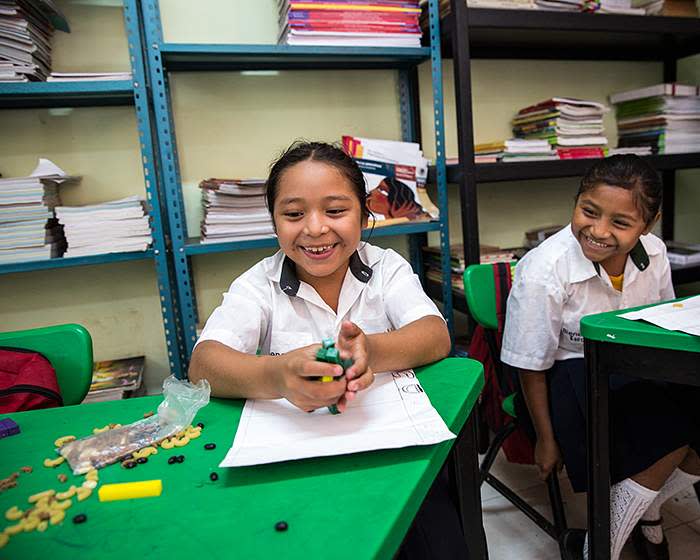
Yuri (left) at her desk, starts a new calculation on her paper grid
The potential benefits of Maya maths for early learning are huge. Proponents of the method say simple sums can be mastered even by preschool children, as soon as they are able to count. More complicated maths, including multiplication, division and square roots, can also be worked out using the Maya tablero, or grid.
More importantly, the children are learning to think analytically without knowing it, using a method that makes abstract mathematical concepts tangible. Training children in logical thinking also gives them emotional and social advantages — the power to challenge inconsistencies where they discover them.
The laws of Maya maths are simple: a bean is worth one unit, five beans make a bar, zero is a pasta shell.
Maya numbers are set out vertically, read from top to bottom. The bottom row of the grid records the units from zero to nine, the next one up tens, the one above that hundreds, and so on. When a bean is in the bottom row of the grid, it represents a single unit. Move it up a level and it becomes 10, up again and it is worth 100. In the same way, a bar in the bottom row is worth five, move it up and it becomes 50, up again and it is 500.
At the front of the classroom, Mary Carmen Che Chi, who teaches Yuri’s class of pupils aged between six and eight, is putting these principles into action. She asks the children to roll a giant pink paper die and calls out the number.
“Four,” she shouts. “Four little beans.”
The children — some of whom have been distractedly building little towers with their wooden blocks — promptly get to work moving beans on to the grids in front of them.
“But once there are five beans, what happens?” Ms Che Chi asks. “They become a bar!”
The children sweep away the beans from their papers, replacing them with a thin wooden block or, in some cases, a twig. The game of addition continues, with each new roll of the die adding to the total. Soon it reaches 20 and Yuri has it right: she places a pasta shell in the bottom row of her grid for zero and two beans in the row above. Sneaking a look across at her paper, a boy who has only the two beans on his own sheet surreptitiously slides a pasta shell underneath.
“I think it’s fun,” says Yuri, who wants to be a teacher when she grows up. “I like the questions because it’s talking about numbers… counting, numbers — that’s what I like best.”
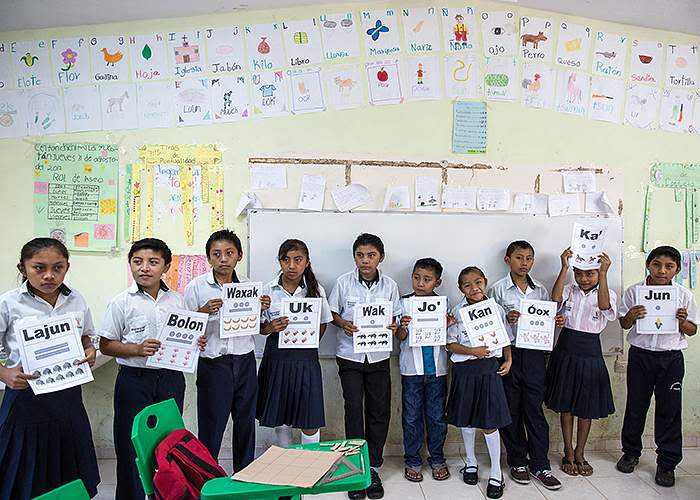
Students hold signs showing the Maya names for the numbers one to 10
The Ignacio Ramírez Calzada primary school, where Yuri studies, began teaching the Maya system last September. New headmaster, José Manuel Cen Kauil, who teaches the school’s only other class (of nine to 11-year-olds), wanted to improve basic maths skills. Aside from an initial investment in teacher training, the method has been almost laughably low-cost. His class uses grids drawn on cardboard, dried corn kernels for units and slim strips of cardboard for bars.
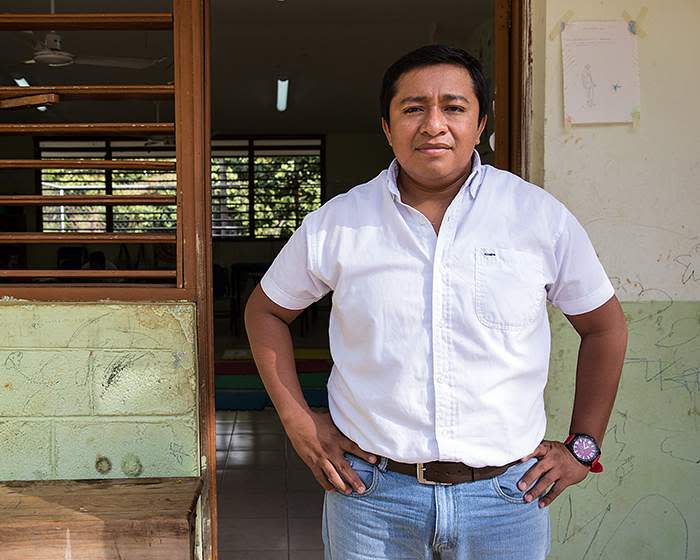
Headmaster José Manuel Cen Kauil believes that learning through play is paramount
“It’s empowering,” says Manuel Gil Antón, a sociologist at the Colegio de México in Mexico City and an education specialist. “Maths itself is not the objective,” he says. “These teachers in the Yucatán are not aiming to teach maths per se. It’s a tool… it’s about consolidating elementary structures of logic, which fundamentally benefits abstract thought. Maths is at the service of logical structure.”
Mastering logical processes through maths — being able to grasp, for example, that if A is bigger than B, which is bigger than C, then A is bigger than C — is a crucial stepping stone to developing critical thought during early childhood, he says.
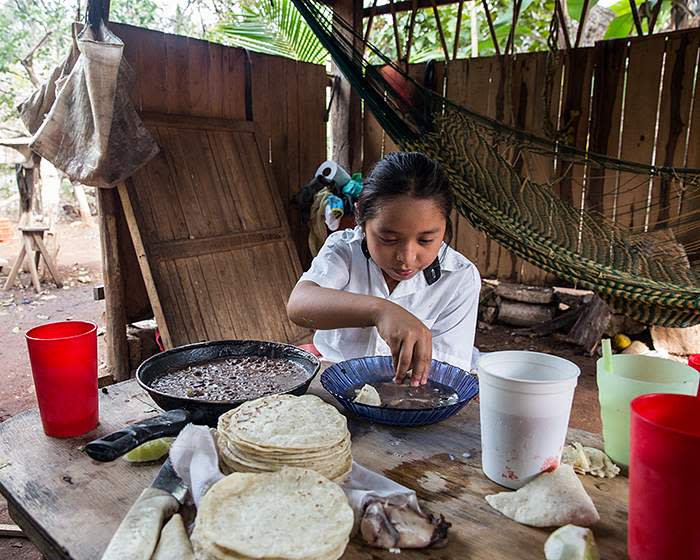
Yuri eats a lunch of tortilla and beans at home in the remote village of Celtún
In a country like Mexico, where social divides run deep, empowering children from less privileged backgrounds and giving them confidence is crucial. The method has also put the region’s indigenous pupils, who can speak Maya but are sometimes more at home in Spanish these days, back in touch with their heritage. In indigenous schools, like Yuri’s, the children learn in both Maya and Spanish.
“It’s not the only strategy, but it is practical and simple,” says Enrique Cetina, a Yucatán region indigenous education supervisor and an advocate for the methodology. “We have tried to make maths more direct, more practical — maths for life.”
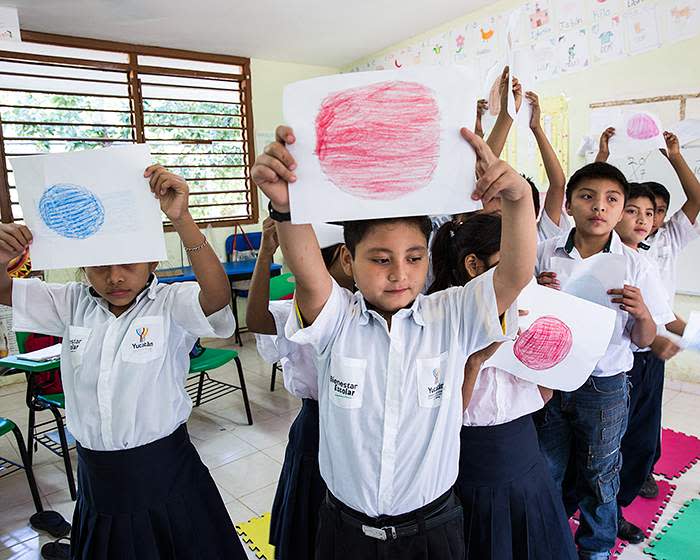
The children act out a life-size Maya grid, representing the dots and bars with their own bodies
Mr Cen Kauil wants to try teaching his students chess next. He believes in the importance of learning through play. In his small classroom, under the whirr of an overhead fan, he lays coloured mats out on the floor to make a giant grid. This time the children themselves represent the units or bars, running on to the mats to compose the numbers as he calls them out.
It is boisterous and the children are loving it as they cram on to the squares, correcting each other and laughing. “I’m trying to get them to reason without them realising,” he says. “I haven’t got a magic wand — results don’t come overnight — but we have to stick at it and be patient.”

Yuri and her classmates have access to Maya maths today thanks to a chance encounter that took place nearly 40 years ago.
In 1979, a few months after Luis Fernando Magaña had arrived to study for his doctorate in physics at McMaster University in Toronto, a visiting cultural delegation from Yucatán arrived in town. After the shock of Canada’s sub-zero temperatures, the delegation was a welcome reminder of home. The visitors showed off their colourful dances, fine cuisine, artefacts and books.
At one of their events, Prof Magaña chanced upon a copy of An Account of the Things of Yucatán, a seminal 16th-century work on the culture and traditions of the Maya, as observed by bishop Fray Diego de Landa, a former inquisitor and one of the first Franciscan missionaries to arrive in Yucatán.
Prof Magaña happened to open the book at chapter 24, a description of the Maya counting system. He was hooked.
“I abandoned my thesis for a month and went to the library,” he chuckles, sitting in his present-day office at the National Autonomous University of Mexico (UNAM) in Mexico City.
He began to read anything he could lay his hands on about the extraordinarily sophisticated arithmetical system the Maya had developed using a vigesimal, or base 20, method of counting — inspired, scholars believe, by our number of fingers and toes.
“The Maya were the first to discover zero, 600 years before cultures in India,” Prof Magaña says. Some mathematicians dispute which civilisation came first, but agree the Maya arrived at the concept of zero earlier than most — scholars point to around the fourth century AD, although some place it earlier. The Maya also apparently discovered zero independently.
“When the Europeans learnt about zero, the Maya had had it for 1,500 years,” Prof Magaña says.
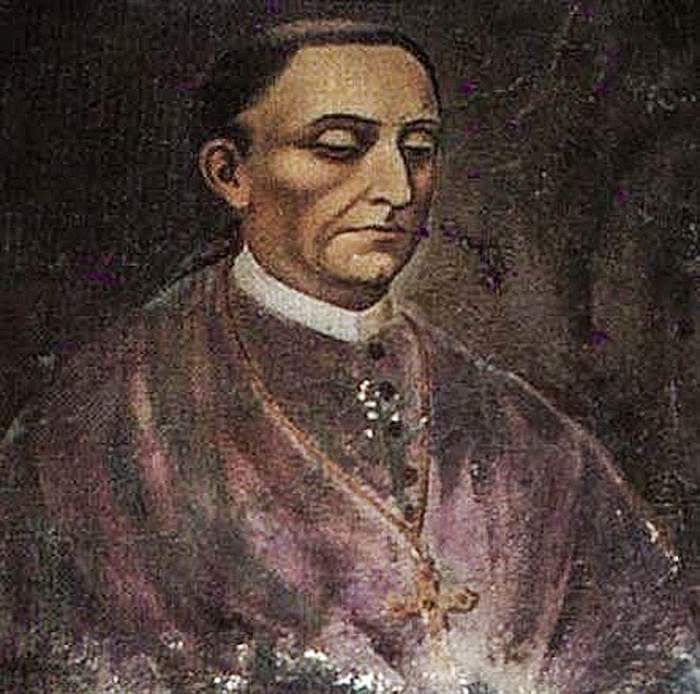
Fray Diego de Landa wrote an account of the Maya counting system in the 16th-century after his time as a bishop in the region
The Maya also developed one of the earliest writing systems in Mesoamerica (the area of pre-Spanish native cultures in Central America), considered the most sophisticated and featuring 800 glyphs. “In writing, they were way ahead of the game,” says Elizabeth Graham, an archaeologist specialising in Mesoamerica at University College London.
“They certainly developed astronomy to the highest degree,” she adds. Observing the stars using only the naked eye and sticks to guide them, they were able to calculate the length of a year with astonishing precision — to 365.242 days.
The ancient Maya ordered their grids in powers of 20, with the number on the bottom for values up to 20, the next row up for multiples of 20, the next for multiples of 400 and the one above that, multiples of 8,000.
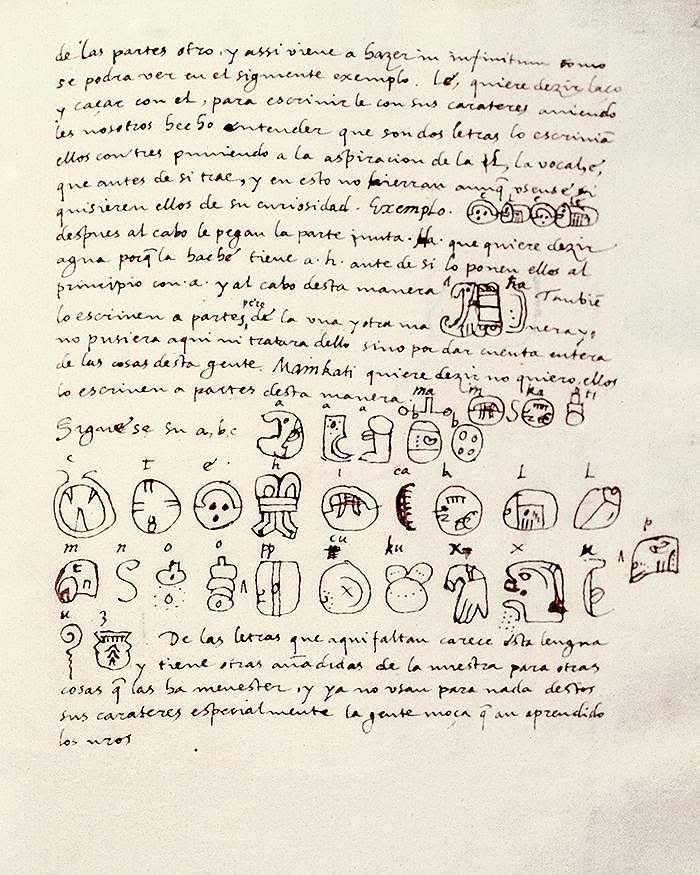
A page from the book, An Account of Things in the Yucatán, describing the Maya writing system
Back in Mexico, Prof Magaña, who also has an undergraduate degree in mathematics, decided to share what he had discovered. In the late 1980s, he was teaching an evening class for postgraduates in quantum mechanics but found his students were drifting off by the end of the first hour.
“So I started teaching them Maya maths,” he says — a kind of intellectual diversion for well-trained minds. “They were fascinated. They asked for more — they were like little kids.”
Take the Maya maths masterclass: addition with Prof Magaña
Masterclass part 2: subtraction with Prof Magaña
Soon, the professor was being invited to talk about Maya maths at conferences in Spain and Italy — he had had the idea of adapting the method to a base 10 to make it simpler for students brought up on the decimal system. But it was not until about a decade ago, at a congress in the Spanish city of Murcia, that he first saw how Maya maths could be a breakthrough for children with learning difficulties.
There, he met a mathematician whose dyslexic six-year-old was struggling at school. The father went home to teach her the method and “in one afternoon, the girl had learned addition, subtraction and multiplication”, he says. That success gave Prof Magaña renewed impetus. “I felt guilty — why not teach it in Mexico?”
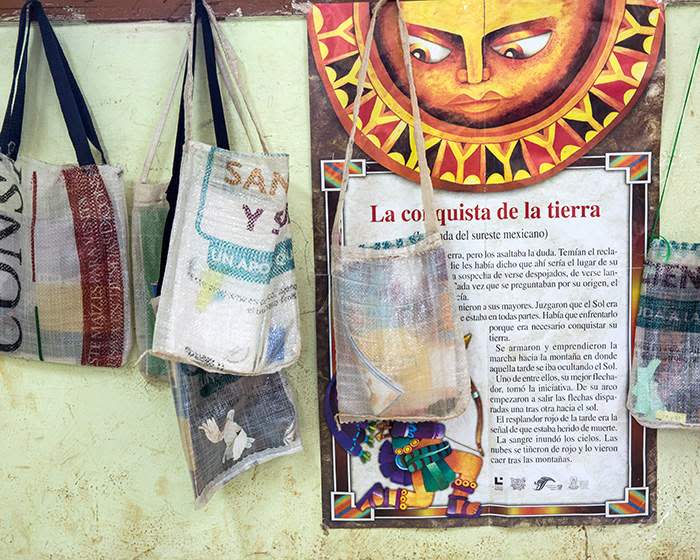
Book bags made of recycled sacks hang in front of a poster about the ancient Maya
The obvious place to start was in his native state of Yucatán, but first he would have to convince the state ministry’s heads of indigenous education. Their main objection was Prof Magaña’s divergence from the traditional vigesimal base.
“If you want to rescue your heritage, you have to make it useful,” the professor argued. The officials lapsed into a heated discussion in Maya. “I thought it was rude,” he remembers, “I was about to walk out when the head of indigenous education raised his hand and said: ‘When do you want to start?’ I said: ‘Tomorrow.’”
That was in 2009. Prof Magaña asked officials to gather a dozen volunteer teachers for him to train; the officials summoned 300. The following year, indigenous schools in the Yucatán began adding Maya maths to their curriculum. Since a change of state government in 2015 the scheme has continued in a more ad-hoc way.

Does Maya maths have a future beyond Yucatán’s indigenous schools?
Professionals believe that, with the right political will, it could easily be rolled out across Mexico. New national curriculum guidelines, unveiled last year, include as key goals “mathematical reasoning” and engendering a “favourable attitude” towards maths in children by the end of primary school. “Playful maths workshops” are one approach suggested by the guidelines.
Maths is one of the areas in which Mexican students are failing most comprehensively, according to the OECD’s latest Pisa evaluations, which assess student performance around the world at age 15. Despite being Latin America’s second-biggest economy, Mexico ranks bottom of the class in maths among OECD member countries and 58th overall, of the 72 nations ranked.
Some 57 per cent of Mexican students fail to reach the baseline proficiency in maths — significantly worse than the OECD average of 23 per cent.
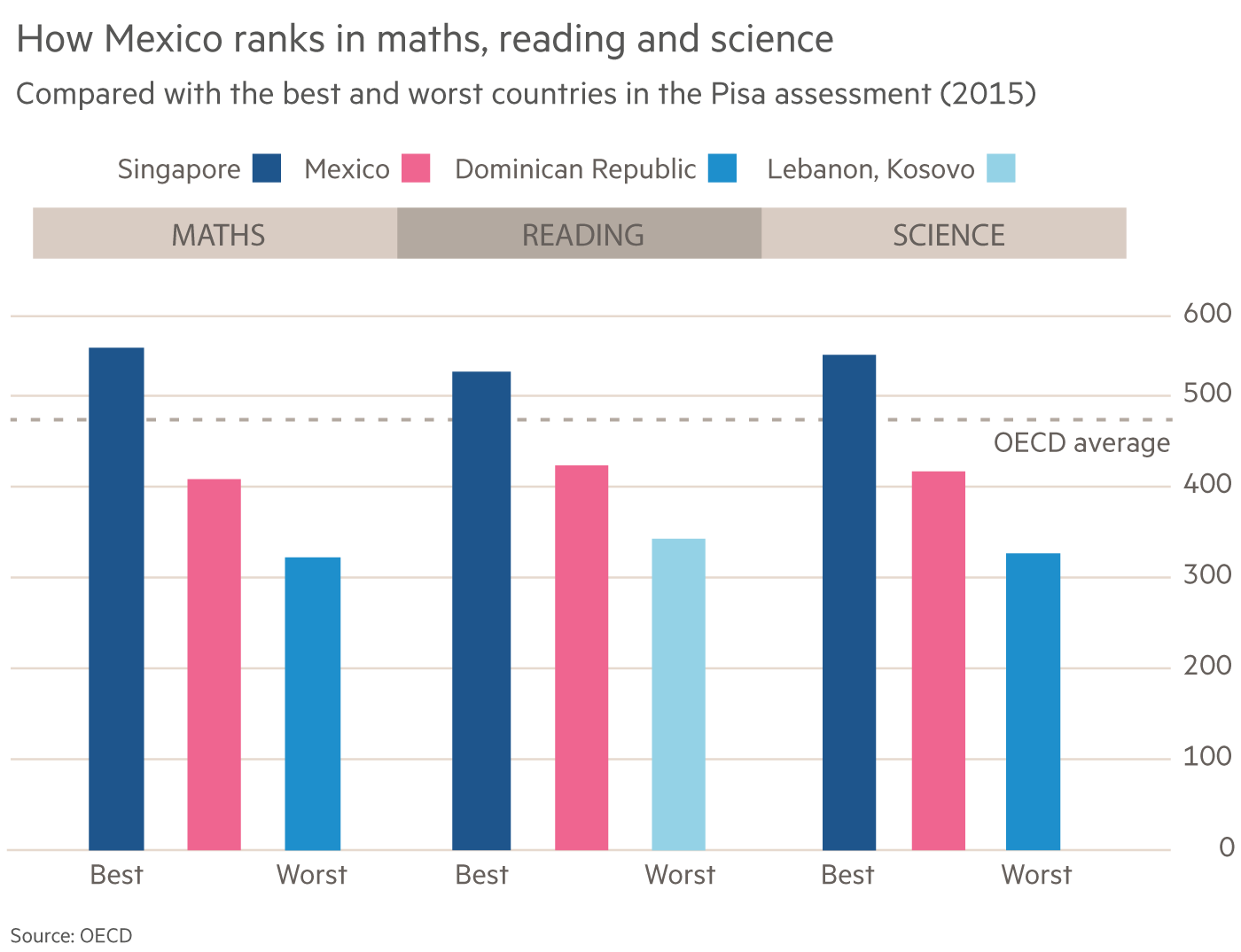
In Yucatán, indigenous state schools have been among the worst performers — in 2006, only 0.1 per cent of students in those schools achieved “excellent” grades in maths, while nearly half displayed “insufficient” performance.
Things were not much different by 2010: 3.1 per cent of students reached “excellent” and 41.3 per cent were classed as “insufficient”. But then, things started to change. By 2011, 8.3 per cent of students in indigenous state schools were achieving “excellent” grades in maths (second only to private schools), while the proportion ranked as “insufficient” had shrunk to 29.4 per cent.
It is hard to say for sure whether the introduction of Maya maths in indigenous schools was the reason for the uptick but, in the same year, the performance of the best and worst students in all other categories of schools hardly changed. Only indigenous schools saw such a dramatic improvement in maths.
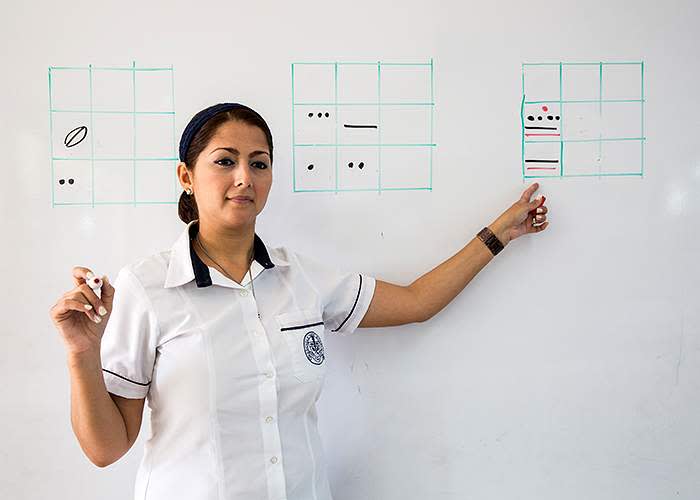
Guillermina Pérez has been teaching Maya maths alongside conventional maths to her private-school students since 2012
Whatever the data say, teachers at the forefront of the Maya maths experiment are convinced it is having a positive effect. Guillermina Pérez is a teacher at the Escuela Modelo, a private school in the Yucatán state capital, Mérida, that has been teaching Maya maths since the start of the 2012 school year.
Ms Pérez has been surprised and delighted to see how students baffled by a concept in conventional maths understand it when using the Maya method.
“It helps [pupils] take decisions, it gives them security, enables them to reflect — what do I have to do, what’s next? This is a very important process in the use of Maya maths,” she says.
Escuela Modelo’s headmistress, Trinidad Díaz, on the psychological benefit that learning Maya maths has on young children
Trinidad Díaz, Escuela Modelo’s headmistress, says she had been hunting for a more effective way to teach maths when she heard about Prof Magaña’s method. Her school teaches the Maya system to both preschool-age and primary students alongside conventional maths. She finds it helps both the confident learners and those having difficulties.
“We’ve seen the benefits gradually and I’d venture to say that we haven’t seen them all yet,” Ms Díaz says.
“They don’t stay at the same level they would be at with traditional or conventional maths. If, say, we’re working on addition and subtraction and they master that, [they say] ‘Give me more, teacher’, and the teacher moves on to multiplication and division, even if the curriculum doesn’t require it yet. We manage to cover more [ground] than we generally can before the end of primary school.”
Prof Magaña on the importance of building self-confidence among the children of indigenous communities
Prof Magaña is most thrilled by the prospect of seeing children develop self-confidence. Today, he says, in a country blighted by racism and deep gulfs between rich and poor, this 2,000-year-old maths method is a fantastic leveller. Children from poor, indigenous communities are all too often left with bleak educational prospects and next to no career options, he says.
“Any child from indigenous communities, or anyone at all, who is taught to think analytically, correctly — I’d like to see who makes fun of them later on. That’s the point,” he says. “So this is a powerful tool in a country like Mexico, or anywhere in the world. Poor maths teaching becomes one more cause of social inequality.”

If you would like to experiment with more complicated Maya maths, including multiplication, division and square roots, email jude.webber@ft.com or leave a request in the comments below this story.
Reporting: Jude Webber in Yucatán
Photography and Video: Bénédicte Desrus
Illustrations: Serge Seidlitz
Editor: Cordelia Jenkins
Picture editors: Michael Crabtree and Alan Knox
Video editor: Paulo Pascual
Graphics: Cleve Jones
Production editor: George Kyriakos
Subeditor: Philip Parrish
Additional photography: Alamy, Getty Images/DeAgostini, iStockphoto
Supported By:
© THE FINANCIAL TIMES LTD 2018

